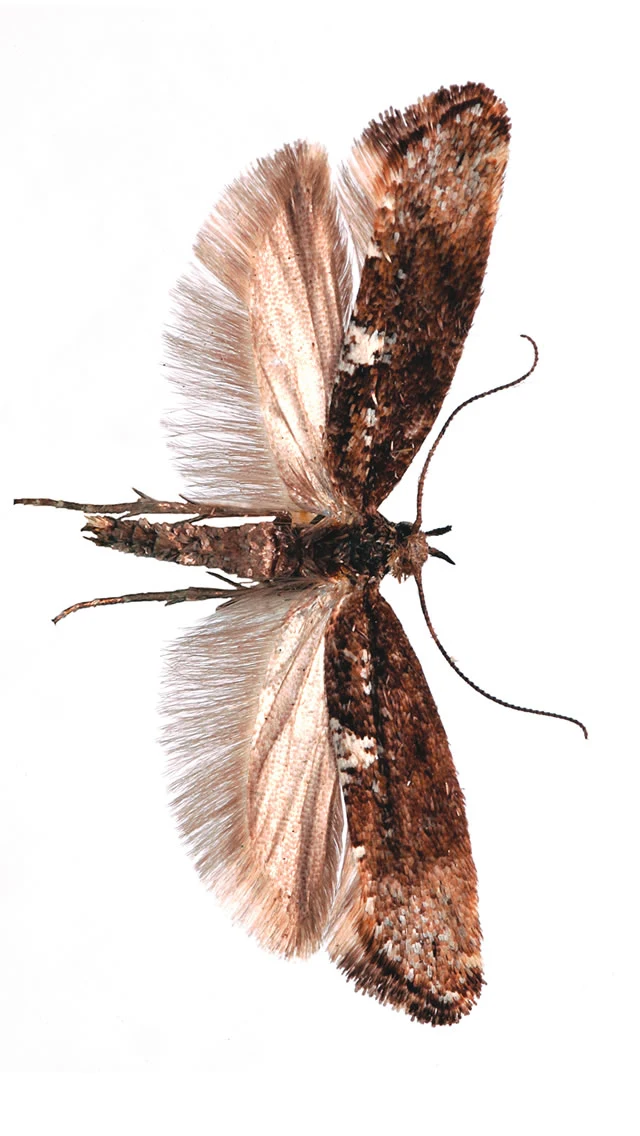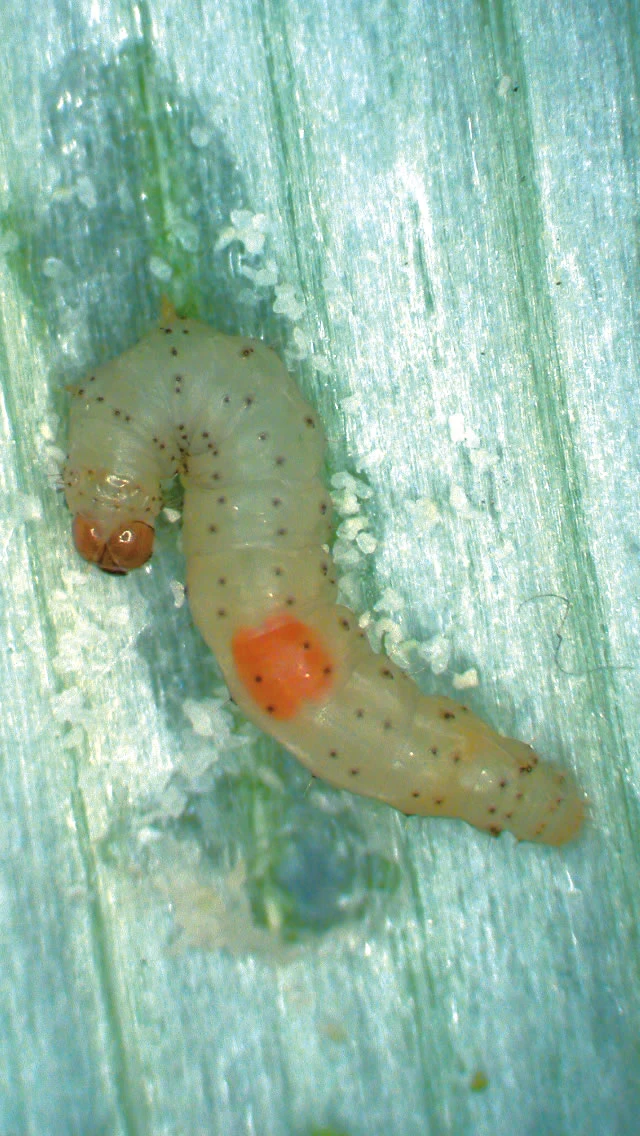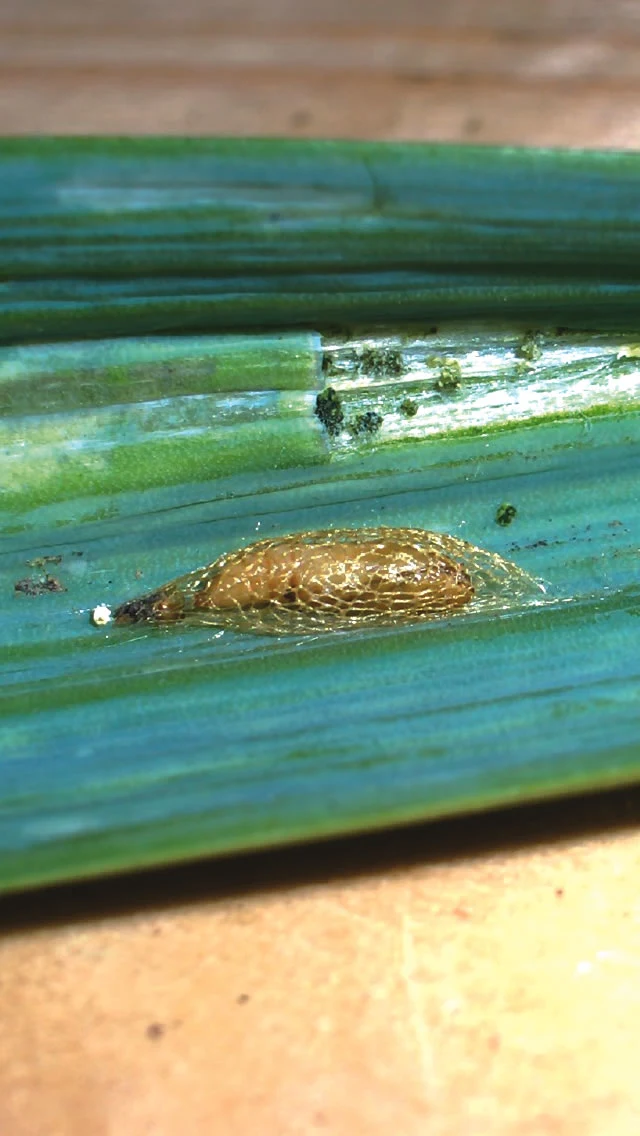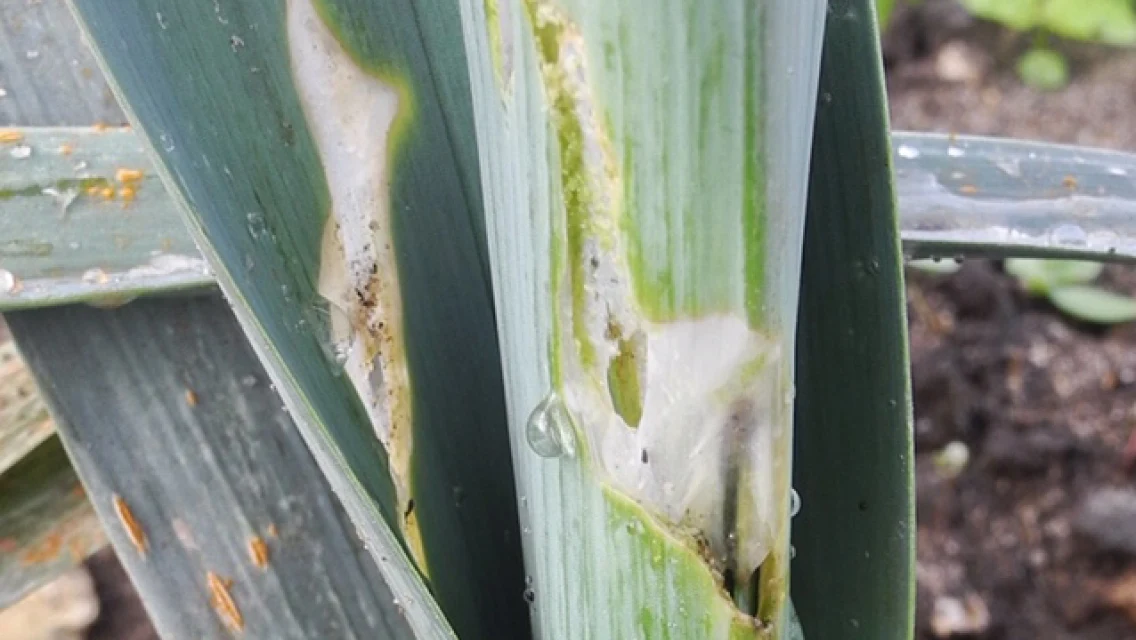
Leek Moth
Acrolepiopsis assectella
Identification
The adult moth is an inconspicuous brown colour with a triangular white patch and further smaller white markings on the folded forewings. The hind wings are lighter in colour and the wingspan is 16-18 mm.
The caterpillar is a light yellow/green colour with dark brown markings and is up to 14 mm long when fully grown.
Symptoms
The young larvae mine into the leaves from where they make their way into the growing point of the plant. In onions they tunnel and move in the centre of the leaves from where they move into the bulb where they can cause secondary rotting. Symptoms of leaf damage are lacerations, pitting and typical translucent ‘windows’ especially in onions.
Life-cycle
After overwintering in plant debris and other sheltered locations, the adults emerge in early spring. After mating single eggs are laid at the base of host plants on the undersides of the leaves. Within 7 days the larvae emerge and mine into the plant leaves. After a series of moults a reddish/ brown cocoon is formed which is attached to the leaves within a finely netted white silk webbing. In favourable temperatures the adults emerge after a period of 10 days.
There are 2 generations per year. The first generation is responsible for damage in May and June and the second generation is active in the autumn.
Importance
The leek moth is an important pest of leeks, garlic and onions in Asia and continental Europe but is only an occasional pest in parts of southern and eastern England although there are more recent reports of sightings in the Midlands.
Damage to leek leaves, especially where pest pressure is severe, can severely affect crop quality and marketability. In onions larval mining and feeding activity can lead to secondary rotting of the bulbs in store.

Leek moth adult with wings open

Leek moth larva

Leek moth cocoon and tunneling damage

Leek moth adult with wings folded

Leek moth damage on onions

Leek moth damage on a leek plant Oct. 2016 (Photo A. Malcom)


